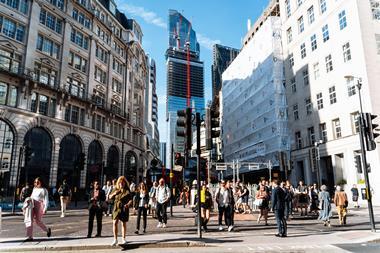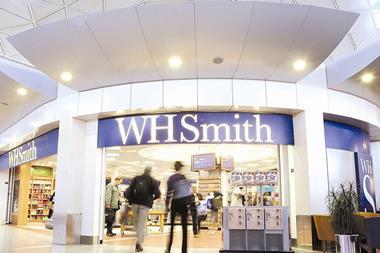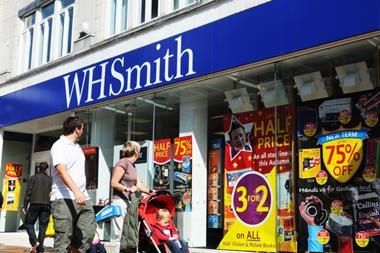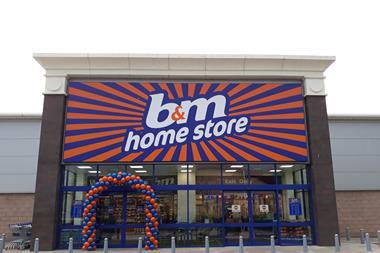This week, the BRC published the sixth major study - and there are also several smaller efforts - to appear since the launch of the Mary Portas Review almost exactly a year ago. So what possible need is there for yet another report?
Well, ’21st century high streets, Part 2’ is the first to look at what has actually been achieved by the government, businesses and local authorities since the publication of its acclaimed original report - predating the coalition - in 2009.
The original document called for a series of national and local measures, based around six critical factors it identified to rescue failing town centre models, including policies to reduce the impact of crippling rates, ripping up red tape-laden planning laws and encouraging free or cheaper parking.
So how successful have we been? There is some good news. The new report lists a string of examples from across the UK, of town and city centres that have begun to turn themselves around, thanks to a combination of local and national funding and initiatives (see opposite). It also welcomes the new National Planning Policy framework which, it says, makes a “substantial contribution” to removing pointless bureaucratic barriers.
“The inclusion of office and leisure development in the town centre first principle has further strengthened the principle, and represents significant progress,” it adds. The report even endorses many of the recommendations in the often-derided Portas review.
But overall, the report suggests progress is as slow as the task is tough. Indeed, it’s getting tougher: while calls from three years ago have, in many cases, been ignored, the burden for businesses operating on the high street have become even more expensive. And investment has fallen by 27% in real terms. “The UK is no longer as attractive to investors as it once was,” it notes. And the latest vacancy rate of 11.3%, in October, was the highest since it began monitoring rates in July 2011, it adds.
The report’s biggest disappointment concerns the “disproportionate” and growing impact of business rates. Published two days ahead of the chancellor’s Autumn Statement on Wednesday, the BRC’s call to freeze rates as a matter of urgency went unheeded this week by Mr Osborne.
But the report warns that the £100,000 apiece awarded to the 27 Portas pilots will in the long term prove to have only “limited impact” unless the government tackles the rates issue, while providing case studies of what can be achieved when these costs are eased.
Councils from Croydon in South London to Holyhead in Wales have launched schemes to incentivise businesses by slashing the rates burden - and brought in multi-million-pound funding and the prospect of thousands of new jobs.
Accordingly, the report calls for an “urgent review” into the calculation of annual rate rises, currently based on the previous September’s Retail Price Index (RPI), warning the cost to retailers is an extra £350m this year alone, on top of the £6bn they already have to find.
Parking
It also rages at the lack of progress, at a local and national level, in improving accessibility, describing “expensive, badly designed parking and poor public transport” as a huge part of the problem gripping the UK’s high streets.
While welcoming the Portas review’s recommendation of a national system to police parking rates in town centres - including parking league tables to name and shame the worst offenders - the BRC report notes the government’s failure to implement them, adding that “night time delivery curfews have still to be relaxed.”
And it highlights a scheme in Wanstead, in the run-up to the Olympics, where night-time delivery restrictions were lifted, alongside measures to ensure minimum noise disruption, that boosted availability and avoided daytime chaos without a single complaint resulting. These measures, it argues, should not just come round once in a lifetime.
It’s not just national government that has not yet gone far enough, however. The original report said that to succeed, high streets have to give people a reason to want to visit, by providing a “unique sense of place”. Yet despite measures such as the Portas town teams, it finds “many declining high streets still need an urgent and radical re-evaluation of their brand and a strategic vision for the future.”
While noting that many local authorities “often lack resources to effectively manage or build a vision,” it says they now have greater incentives to get this right, through government measures such as the retention of business rates and liberalised planning guidance.
The report argues persuasively that planners have to be bolder in deciding when the model can be fixed or when it is simply broken. The fact is, headline national vacancies mask huge variation in demand, with some prime locations still growing strongly, whereas for others there is little hope.
“Real consideration must be given to the future management of marginal locations, with greater exploration of changing use classes and informed debate about the primary purpose of our high streets,” argues the report.
Tackling the huge cost of retail crime is another key “localism” challenge highlighted, especially given the recent PCC elections. With the cost of crime to UK retailers estimated at £1.4bn in 2010/11, the report calls for more measurers like the scheme in Falkirk, which created a designated safe zone in the town centre, with extra policing and ambulance patrols making the town safer whilst also boosting the night-time economy’s prospects.
“Many of the issues we’ve campaigned about are now receiving much more attention,” concludes BRC director general Stephen Robertson.
“The government can take credit for The Portas Review and for planning reforms that encourage investment. But if further action isn’t taken, the cost of failure will be borne by communities across the country in the form of more boarded-up premises and an acceleration of the downward spiral.”
Street life: examples of success
The BRC report includes examples of towns and cities in different parts of the UK, where work has succeeded in reducing the number of empty shops and increasing customer footfall. The Grocer looks at some of the areas highlighted to see how they have managed to breathe new life into run-down high streets across the country
Town centre: Holyhead, North Wales
The problem: In 2009, the town was gripped by the UK’s highest vacancy rate with 39% of premises empty.
The initiative: Businesses, local authority and Enterprise Agency secured rent-free premises and business rate relief of up to 80%. In 2011, six empty premises re-opened and have subsequently renegotiated rents. Another eight are due to open within the next two years.
Town centre: Croydon, South London
The problem: Shops left in ruins by the 2011 riots.
The initiative: Grant funding from the Mayor of London’s £23m recovery fund encouraged new and expanding businesses, paying for 65% of their rates in the first year. It’s hoped this scheme will create 2,000 new jobs, and reduce shop and office vacancy rates by 10% within three years.
City centre: Buchanan Street, Glasgow
The problem: How to bring private investment to a historic centre.
The initiative: Glasgow Council will borrow £80m from Public Works Loans Board for public infrastructure work, to be paid back over 25 years. The scheme hopes to attract £310m in additional private investment, and create 1,500 jobs.
City centre: Chester
The problem: How to increase footfall from locals in the town centre.
The initiative: Town centre managers persuaded the local council to bring in free parking after 3pm, when visitors to Chester started to empty car parks and locals returned home. The result was a 23% increase in footfall.



















No comments yet